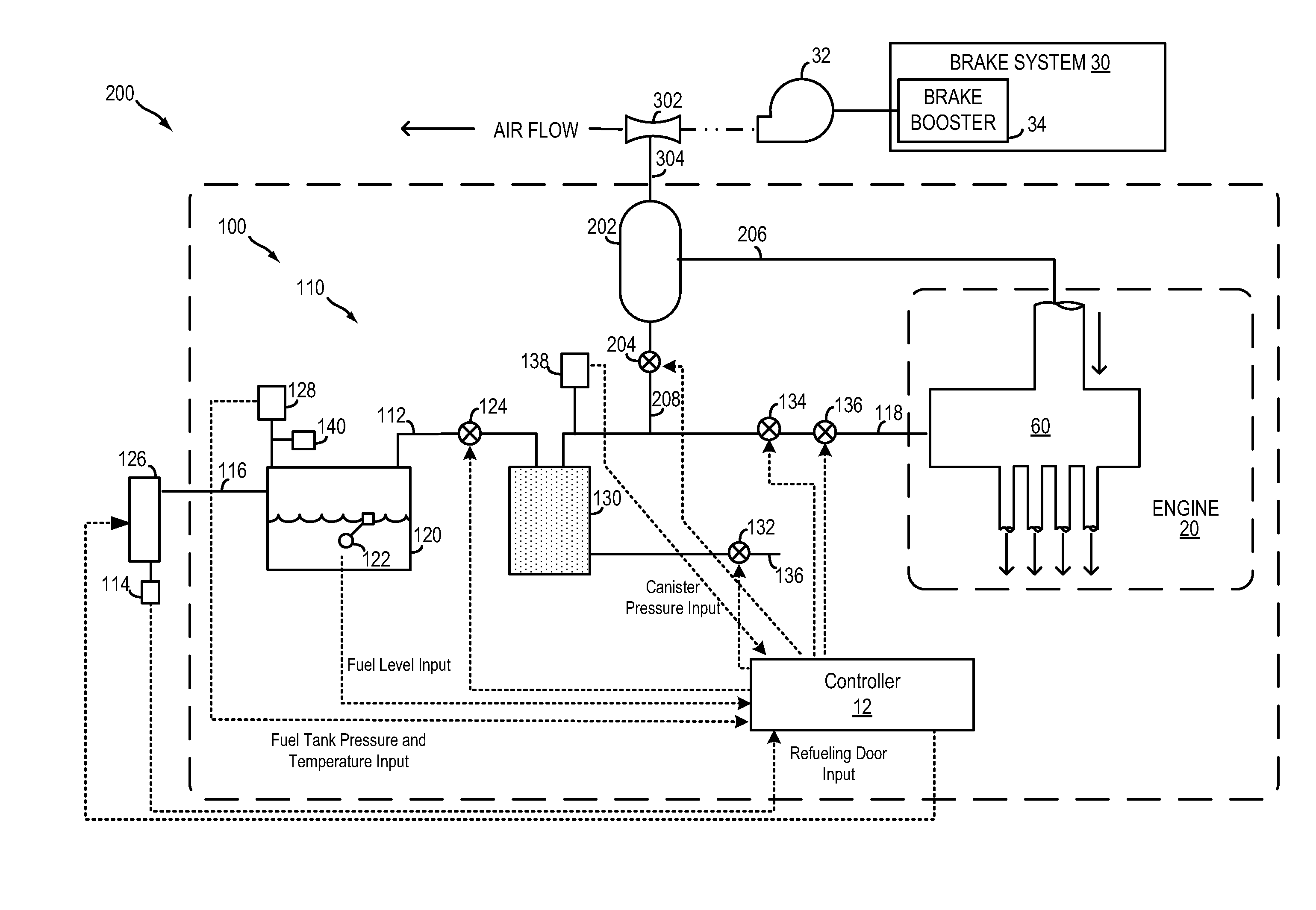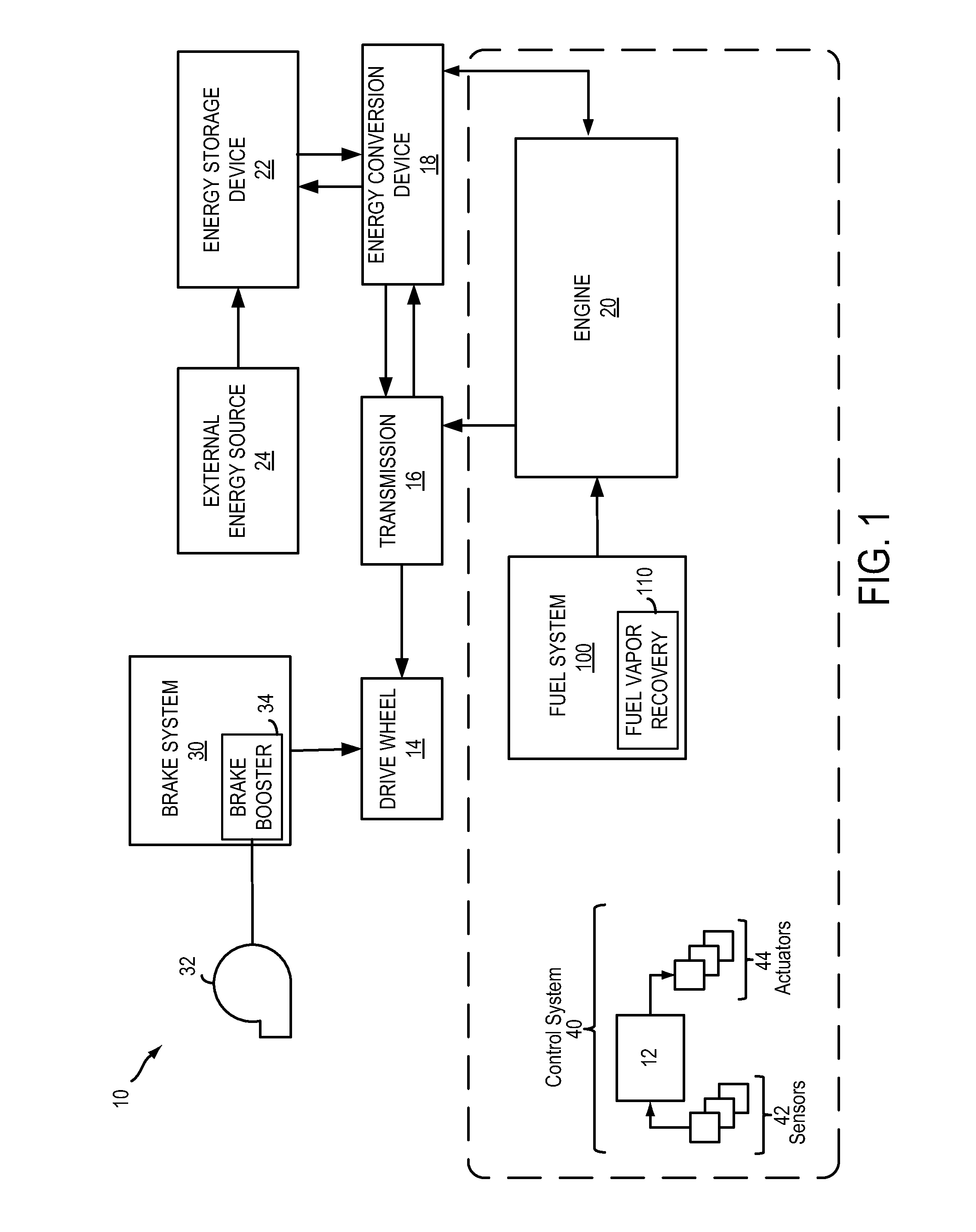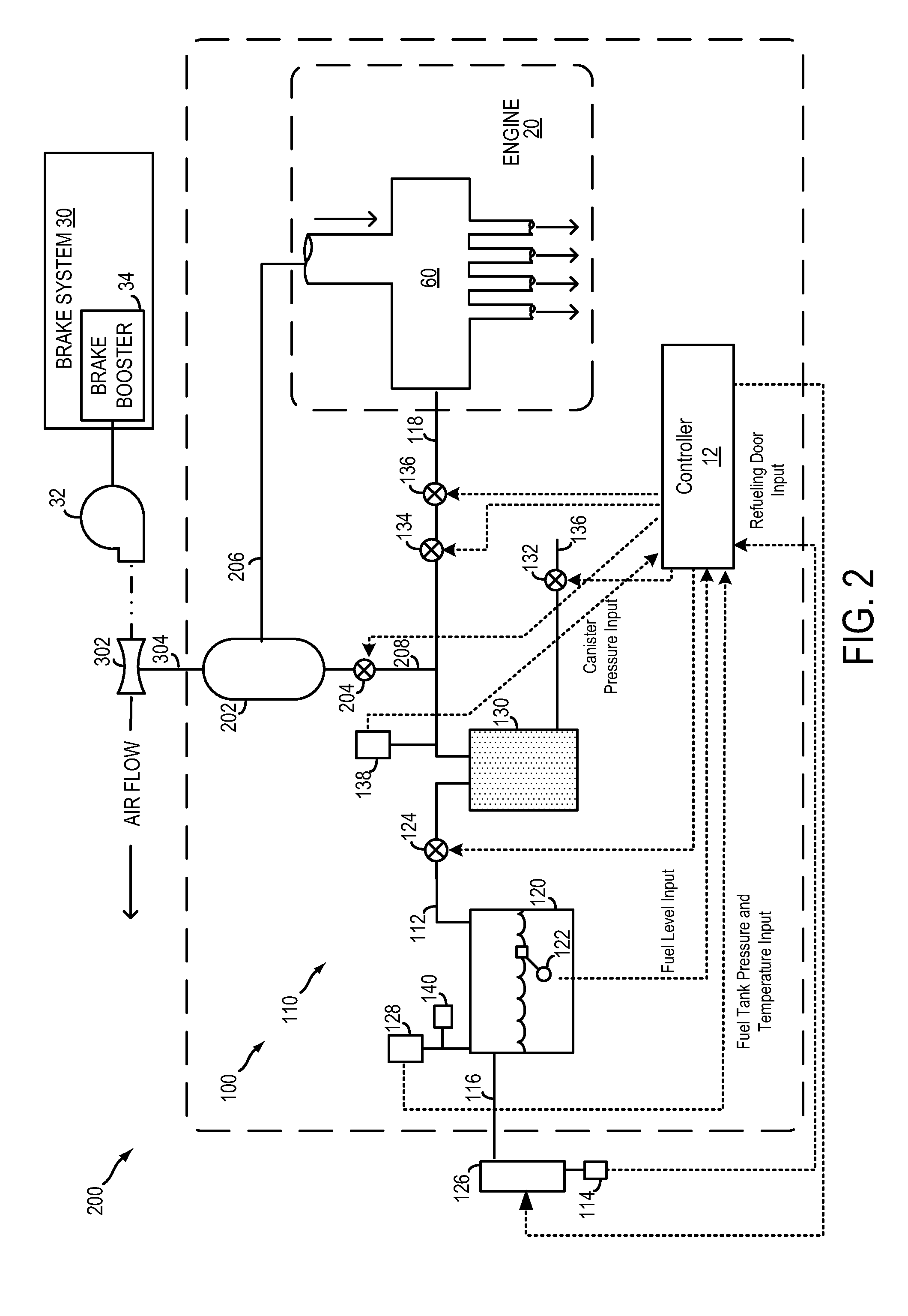Method and system for fuel vapor control
a technology of fuel vapor and purging method, which is applied in the direction of condensed fuel collection/return, charge feed system, non-fuel substance addition to fuel, etc., can solve the problems of insufficient purging of fuel vapor from the vehicle's emission control system, refueling and emission control system leak detection operations that are dependent on pressure and vacuum, and operation may also be affected, so as to reduce the overall carbon emissions of the vehicle, shorten the engine operation time, and reduce the overall carbon emissions
- Summary
- Abstract
- Description
- Claims
- Application Information
AI Technical Summary
Benefits of technology
Problems solved by technology
Method used
Image
Examples
Embodiment Construction
[0021]The following description relates to a fuel vapor recovery system for a hybrid vehicle, such as the vehicle system of FIG. 1, and a method of monitoring flow of fuel vapors and / or air though the fuel vapor recovery system. As shown in FIG. 2, the fuel vapor recovery system may include a fuel tank isolated from a canister by a fuel tank isolation valve (FTIV), the canister further coupled to an engine intake by a canister purge valve (CPV). In this way, refueling vapors may be stored in the canister while diurnal vapors are retained in the fuel tank, dividing the fuel vapor circuit into a canister side and a fuel tank side. A vacuum accumulator may be included in the fuel vapor recovery system to provide a vacuum source to the canister. The vacuum accumulator may be configured to generate and store vacuum during engine-on conditions and engine-off conditions, such as from the engine and / or from a brake booster pump. A controller may receive signals from various sensors includin...
PUM
 Login to View More
Login to View More Abstract
Description
Claims
Application Information
 Login to View More
Login to View More - R&D
- Intellectual Property
- Life Sciences
- Materials
- Tech Scout
- Unparalleled Data Quality
- Higher Quality Content
- 60% Fewer Hallucinations
Browse by: Latest US Patents, China's latest patents, Technical Efficacy Thesaurus, Application Domain, Technology Topic, Popular Technical Reports.
© 2025 PatSnap. All rights reserved.Legal|Privacy policy|Modern Slavery Act Transparency Statement|Sitemap|About US| Contact US: help@patsnap.com



